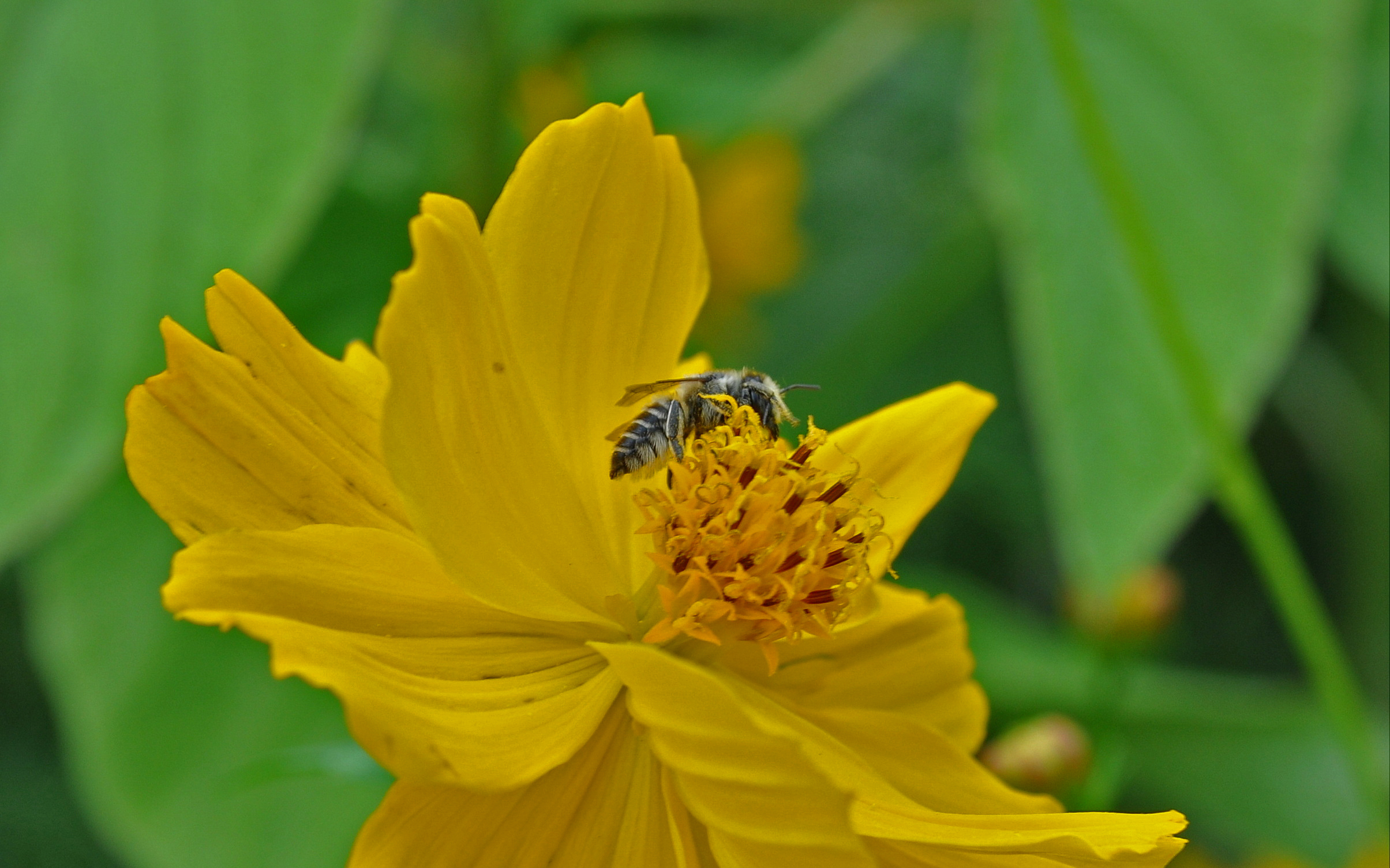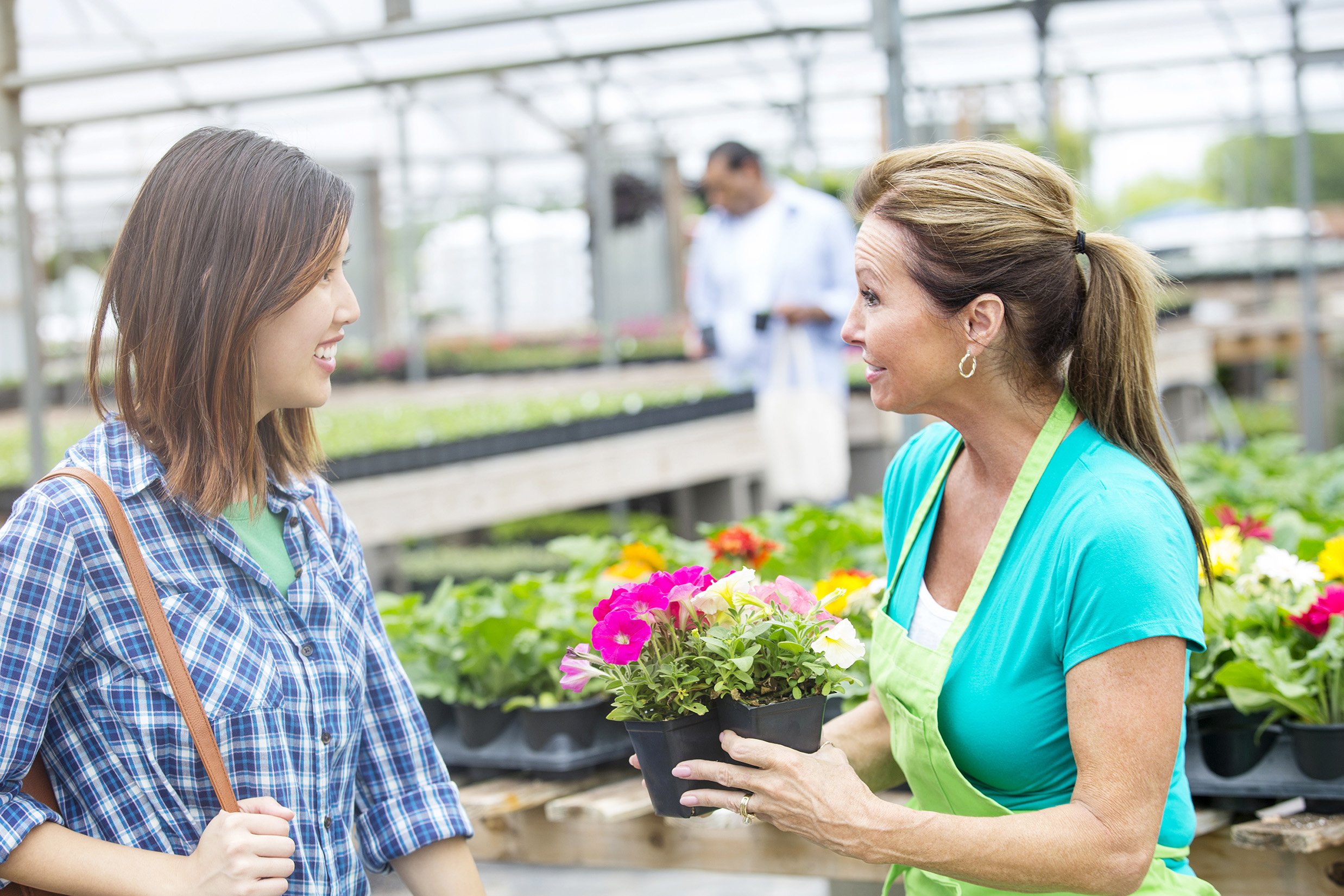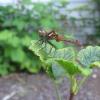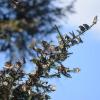Spring is coming and that means Xerces staff email inboxes will soon be peppered with requests for guidance on buying nursery plants. Many will contain questions like this:
Dear Xerces: I am excited about creating my first pollinator garden! I’ve heard that some plants can contain pesticides toxic to bees. How do I find plants that won’t harm the bees and butterflies I’m working to attract?
It’s an important consideration, because pesticides can linger in plants, putting foraging pollinators and other insects at risk.

Purchasing plants free from harmful pesticide residues is an important step in protecting pollinators in your garden. (Photo: Sara Morris.)
Creating a welcoming home for local pollinators in your backyard or city park is reason enough to choose plants free from harmful pesticide residues. But how do you figure out if the plant you want is free of pesticides that can harm pollinators? How do you learn if the nurseries you patronize actively prevent pest problems instead of relying on pesticides as a routine fix?
To help you answer this question, on February 26, Xerces and partners are offering a new, informative, and interactive webinar, Buying Bee-Safe Plants: How You Can Help. The webinar will provide you with tools for identifying pollinator-friendly growing practices in nurseries and greenhouses, and will help you develop a plan for talking to your nurseries. iew the YouTube video of the webinar here.
Three ways to secure plants safe for bees are:
- Ask for USDA certified organic plants and seeds,
- Avoid plants grown with neonicotinoids and similar insecticides, and
- Shop at nurseries that practice pollinator-friendly pest management.
Another way to be sure your plants are bee-safe is to grow your own.
Learn more by consulting our newly published guide, Buying Bee-Safe Plants, and its companion guide, Offering Bee-Safe Plants: A Guide for Nurseries, which explain pollinator-friendly production practices. Then, put it into action. This spring, we ask our supporters and followers to encourage nurseries across the country to incorporate pollinator-friendly pest management into their business. We invite you to join us on March 13 and/or April 22 for two nationwide days of action. Across the country, using tips from Xerces, pollinator supporters will fan out to talk to their nurseries, pressing for pollinator-friendly plant production. Learn more here.
We hope to see you at the days of action—and bring a friend!

When buying plants, ask what steps your nursery takes to offer plants grown using pollinator-friendly pest management. (Photo: SDI Productions, iStock.)
Further Reading
Learn more on the Bee-Safe Nursery Plants web page
Read our fact sheet about Buying Bee-Safe Plants
Download a copy of Offering Bee-Safe Plants: A Guide for Nurseries to share with your local plant sellers
View the February 26 webinar, Buying Bee-Safe Plants: How You Can Help




